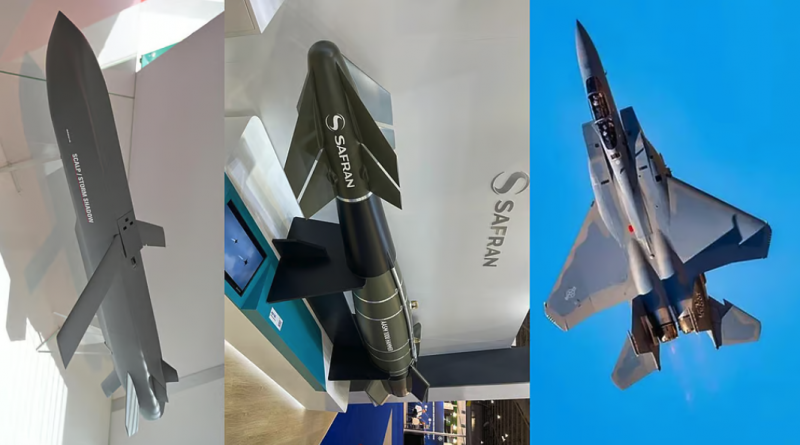Explained: Why India Used SCALP Missiles and HAMMER Bombs in Operation Sindoor
Operation Sindoor wasn’t merely a military response—it was a strategic communication to the world.
In the aftermath of the deadly Pahalgam terror attack that claimed the lives of 26 civilians—many of them Indian and foreign tourists—India responded with a calibrated and precise military operation that has since come to be known as Operation Sindoor. The strikes were not random, nor a knee-jerk retaliation. They were part of a broader message: India will not tolerate terrorism emanating from across its borders.
The Indian Army’s statement, released at 1:44 a.m., stressed that the operation was carefully executed with “considerable restraint in the selection of targets and method of execution.” Importantly, the strikes avoided any Pakistani military installations, targeting only confirmed terror infrastructure in Pakistan and Pakistan-occupied Kashmir (PoK). This selectivity reflects both strategic maturity and a desire to minimize escalation.
What caught international attention, however, was the advanced nature of the weaponry used—especially the SCALP cruise missiles and HAMMER precision-guided munitions, both launched from India’s cutting-edge Rafale fighter jets.
What is the SCALP Missile?
Known in the UK as Storm Shadow, the SCALP (an acronym for Système de Croisière Autonome à Longue Portée) is a long-range, air-launched cruise missile developed by European defense consortium MBDA. With a range of over 250 kilometers and equipped with stealth features, it is designed to strike high-value, well-protected targets deep within enemy territory.
What makes SCALP particularly formidable is its precision navigation system—a sophisticated blend of Inertial Navigation System (INS), GPS guidance, and terrain referencing. Upon launch, the missile descends to a low “terrain-hugging” altitude, making it difficult to detect by radar. As it nears the target, an onboard infrared seeker scans and matches the live image with pre-programmed target visuals. This final stage is what ensures remarkable accuracy, dramatically reducing the risk of collateral damage.
Its all-weather capability, minimal radar signature, and autonomous strike technology make SCALP one of the most lethal cruise missiles currently in service globally.
Why Was SCALP Chosen?
The decision to use SCALP for Operation Sindoor was rooted in both strategic and technical reasoning. India’s targets were deep inside Pakistan—many in hardened, underground facilities believed to host the leadership and logistical support of terror groups like Jaish-e-Mohammed and Lashkar-e-Taiba. These are not simple camps, but fortified compounds with reinforced bunkers and command centers.
In such scenarios, long-range precision and the ability to penetrate hardened structures without a large military footprint are critical. SCALP was the ideal fit—capable of reaching distant targets with surgical accuracy, while minimizing the chances of escalation through unwanted collateral damage.
What is the HAMMER Munition?
Alongside SCALP, the Indian Air Force deployed HAMMER (Highly Agile Modular Munition Extended Range) bombs—precision-guided air-to-ground munitions also of French origin. Manufactured by SAFRAN, HAMMER is what’s known as a “glide bomb.” Unlike traditional gravity bombs, it can be launched from low altitudes and still travel distances up to 70 kilometers, guided by GPS, inertial systems, laser, or infrared technologies.
One of HAMMER’s standout features is its modularity—it can be equipped with various guidance and warhead kits depending on the mission. It’s also resistant to electronic jamming, making it a potent choice in contested airspaces.
Why HAMMER Was Effective
While SCALP was used for deeper and more fortified targets, HAMMER served a complementary role, particularly against medium-range targets where agility and adaptability were key. Some of the terror infrastructure in PoK consisted of safe houses, weapons storage, and training compounds spread across mountainous terrain. For these targets, HAMMER’s high precision and jamming resistance made it a natural choice.
Moreover, the terrain in PoK is notoriously challenging—high altitudes, narrow valleys, and poor visibility. HAMMER’s ability to be launched from low altitude over rough terrain helped the Indian Air Force carry out the strikes without crossing into Pakistani airspace or exposing pilots to unnecessary risk.
A Message Beyond the Missiles
Operation Sindoor wasn’t merely a military response—it was a strategic communication to the world. India showcased its capability to strike surgically and ethically, respecting the international norms of engagement. Unlike conventional bombing campaigns that risk civilian casualties, India’s usage of SCALP and HAMMER highlighted its intent to degrade terror infrastructure without drawing civilian blood.
In contrast, Pakistan’s response—shelling of the Indian border town of Poonch, resulting in the deaths of multiple civilians including children—exposed the stark difference in military conduct between the two neighbors. While India carefully chose advanced precision weapons to avoid collateral damage, Pakistan resorted to indiscriminate shelling.
The Larger Implication
This operation marks a significant evolution in India’s defense posture. The acquisition of Rafale jets, and the integration of SCALP and HAMMER munitions into its arsenal, has provided India with the ability to conduct high-impact, low-footprint operations far beyond its borders. It also signals a clear departure from past restraint where terror attacks went unanswered diplomatically but not militarily.
Importantly, this shift does not indicate a desire for prolonged conflict. In its official communication, India reaffirmed its commitment to peace and regional stability—but underscored that it will not hesitate to act decisively against terrorism.
As tensions remain high, the focus now shifts to diplomatic efforts. But one thing is clear: the rules of engagement in South Asia have changed. With tools like SCALP and HAMMER, India now possesses the ability to respond to asymmetric threats with unmatched precision.



